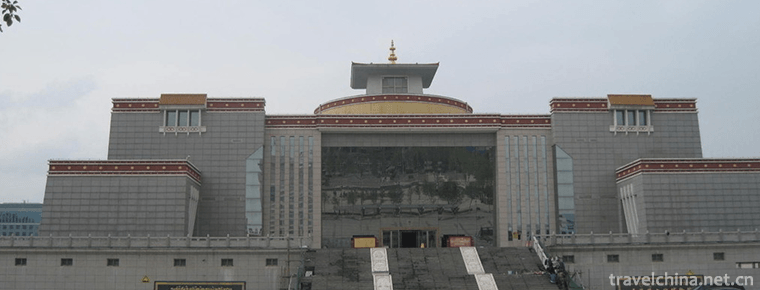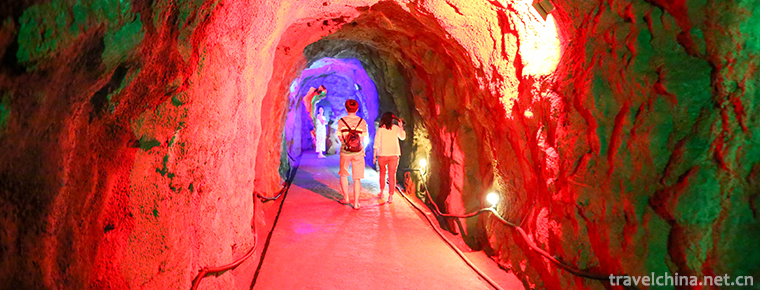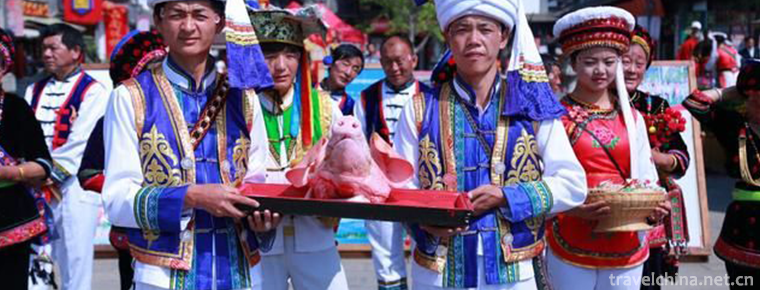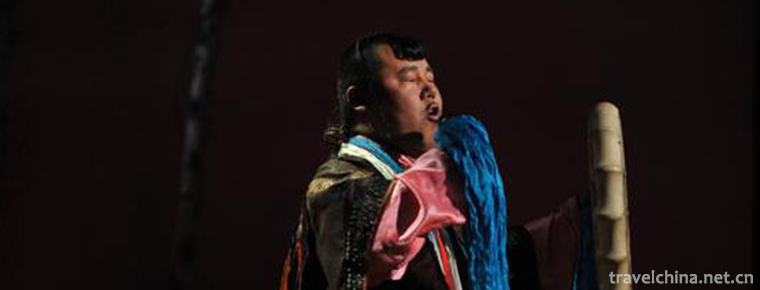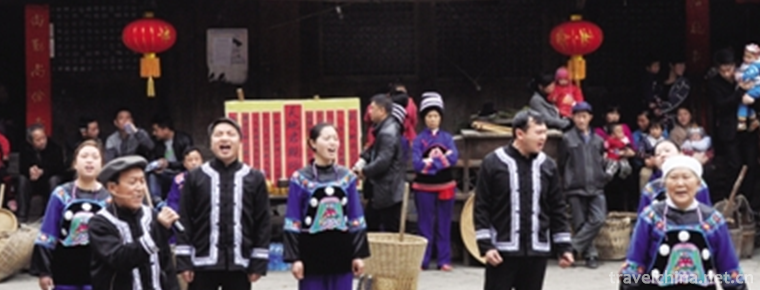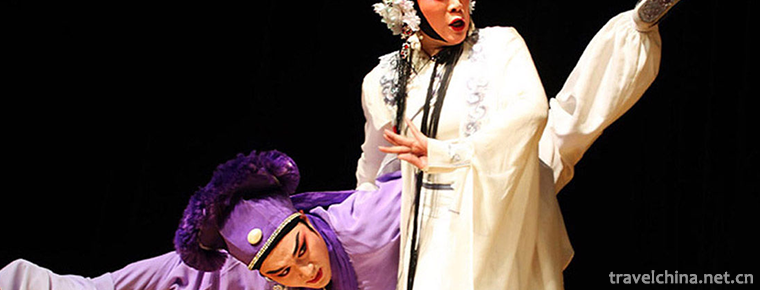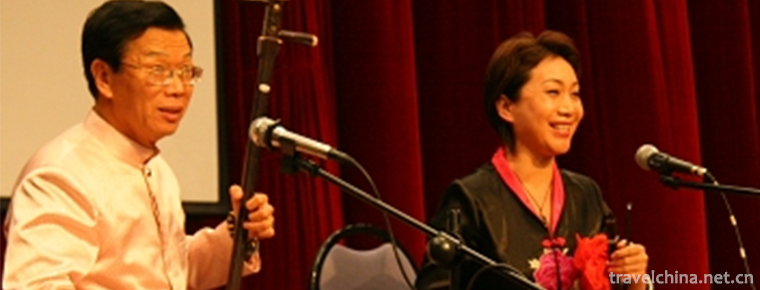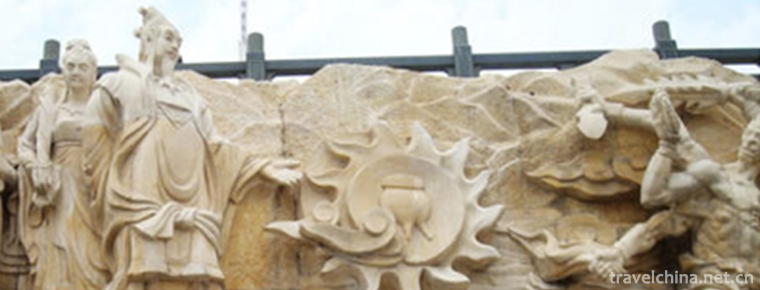The Museum of the Imperial Palace of Manchukuo
The Museum of the Imperial Palace of “Manchukuo†is located in Guangfubei Road, Kuancheng District, Changchun City. It is a Palace Ruins Museum built on the site of the Puppet Manchu Palace. It is mainly responsible for the protection, restoration, utilization, collection, preservation and research of cultural relics and materials of the Puppet Manchu Palace. It also excavates the special historical and cultural connotation of the palace site and holds the museum. Corresponding exhibitions reveal Japan's invasion of Northeast China, enslavement and maiming of the people of Northeast China, and the traitor puppet regime of Puyi, the puppet emperor of Manchu, as well as their sinful acts of loyalty to the Japanese aggressors and the distorted court life at that time, and carry out modern history and patriotic education.
The Puppet Manchu Palace Museum has successively completed the protection, restoration and internal restoration of the main buildings and facilities, such as Qinmin Building, Tongde Hall, Huaiyuan Building, Qixi Building and Dongyu Garden. It has formed an Eastern warning education zone based on the exhibition hall of the occupied history of Northeast China, and a Western rest with the racetrack and the exhibition hall of national culture as the main carriers. The leisure culture exhibition area consists of four major functional areas: the Royal Characteristic Tourist Area with Tongde Dian and Qinmin Building as its core, and the Southern Commercial and Trade Service Area relying on the Antique Art Exchange Center and Royal Palace Food. The Palace Museum of Puppet Manchukuo also has more than 50 basic exhibitions and original exhibitions, such as "From Emperor to Citizen - Life of Aixinjueluo Puyi" and "Forget the History of Japan's Invasion of Northeast China on September 18th".
On May 24, 2007, the Puppet Manchu Palace Museum was awarded as the advanced collective of the national cultural relics system. In 2009, the Puppet Manchu Palace Museum was awarded the fourth batch of national patriotic education demonstration bases. In 2013, the Puppet Manchu Palace Museum was awarded the national key cultural relics protection unit. On May 18, 2017, the Puppet Manchu Palace Museum was awarded the first-class national museum. On October 11, 2018, it was selected as the "National Practical Education Base for Primary and Secondary School Students".
In July 1962, Zhou Yang, then Vice Minister of Propaganda, made an instruction after inspecting the old site of the Puppet Manchu Palace that "Puppet Manchu Palace should be managed by the cultural department to make it a place for exhibiting the first half of the life of the last emperor of China and the crimes of Japanese imperialist aggression against the Northeast".
On December 1, 1962, the Standing Committee of the CPC Jilin Provincial Committee made a decision: "It was agreed to submit the puppet Palace site to the Provincial Bureau of Culture for the preparation of the exhibition hall."
On December 24, 1962, the Puppet Imperial Palace Exhibition Hall in Jilin Province was founded. At that time, it was named as the Exhibition Hall of the Fourteen-Year Crimes of Japanese Imperial Aggression against Northeast China.
On July 28, 1964, the Propaganda Department of the CPC Jilin Provincial Committee and the Jilin Provincial Cultural Bureau decided to co-operate the Puppet Palace Exhibition Hall of Jilin Province with the Jilin Provincial Museum.
On August 16, 1982, with the approval of the People's Government of Jilin Province, the exhibition hall of the Puppet Palace in Jilin Province was restored to its construction system, and the old site of the puppet palace was accepted as the site from Changchun No. 2 Nonmetallic Material Testing Machine Factory.
In 1984, the main buildings in the core area of the Puppet Manchu Palace, such as Qinmin Building and Qixi Building, were successively restored and opened to the outside world. The open area was less than one tenth of the original area of the Puppet Manchu Palace site.
In July 2000, the CPC Jilin Provincial Committee and the Jilin Provincial People's Government decided to assign the old site of the Puppet Manchu Palace to Changchun City for territorial administration.
In February 2001, the Puppet Palace Museum in Jilin Province was renamed "Puppet Manchu Palace Museum".
The Puppet Manchu Palace Museum collects a large number of artistic works such as puppet Manchu Palace relics, Japanese modern and contemporary relics, Northeast modern and contemporary relics, folk cultural relics, modern and representative paintings, sculptures, non-hereditary inheritance works and so on. These include Puyi Diary, Puppet Manchu Ruling Decree, famous Japanese calligraphy, paintings, famous kiln ceramics such as Jiugu, Guodao, Samo in Japan, and precious cultural relics such as steam locomotives produced by Baldwin Locomotive Works in 1889.
On May 24, 2007, the Puppet Manchu Palace Museum was awarded as the advanced collective of the national cultural relics system.
In 2009, the Puppet Manchu Palace Museum was awarded the fourth batch of national patriotic education demonstration bases.
In 2013, the Puppet Manchu Palace Museum was awarded the national key cultural relics protection unit.
On May 18, 2017, the Puppet Manchu Palace Museum was awarded the first-class national museum.
From 2001 to April 27, 2012, the Puppet Manchu Palace Museum was awarded the first batch of national AAAAA-level tourist attractions.
The main function of the Puppet Manchukuo Palace Museum is to expose the sinful acts of Japanese occupation of Northeast China, enslavement and mutilation of the people of Northeast China, and puppet emperor Puyi of Puppet Manchukuo in pursuit of national betrayal and glory, to educate the masses of the people, especially young people, in patriotism and modern history, and to carry out education for the people. The masses, especially young people, have played an irreplaceable role in patriotic education.
Opening Hours
Tickets are sold from 8:30 to 16:10 from May 1 to October 7. The opening time of the pavilion is from 8:30 to 17:20.
Tickets are sold from 8:30 to 15:40 from October 1 to April 30, the following year. The opening time of the pavilion is from 8:30 to 16:50.














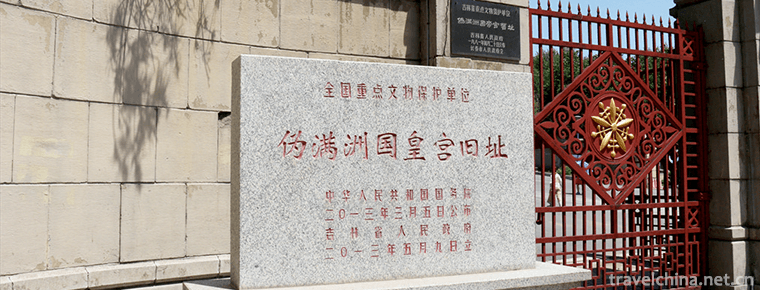
-
East China Bailey Winery
East China Wine Manor is located in Jiulongpo, Nanlongkou, Laoshan, Qingdao. It is the first European Wine Manor in China built strictly according to the European Wine Manor Model.
Views: 163 Time 2018-12-26 -
Qinghai Tibetan Medicine Culture Museum
Qinghai Tibetan Medicine and Culture Museum was built in 2006, with a total construction area of 12,000 square meters. It is the only comprehensive museum reflecting.
Views: 178 Time 2019-02-07 -
Ziweidong Scenic Area
Seeing the pronoun of the first reaction of "purple cave" to "immortal" cultivation and residence, we often enchase that fairyland dream on this name..
Views: 132 Time 2019-03-22 -
Bai people circle three spirits
Bai people around Sanling, a traditional festival in Dali Bai Autonomous Prefecture, Yunnan Province, is one of the national intangible cultural heritage..
Views: 229 Time 2019-04-03 -
Mongolian Humai
Humai, also known as laryngeal singing, double singing, multi-voice singing or Haolinchao, is a singing method of many ethnic groups around Altai Mountains, not unique to the Mongolian people..
Views: 842 Time 2019-06-03 -
Nanxi chant
Nanxi chant is popular in Qianjiang District of Chongqing City. Its origin can be traced back to Tang Dynasty. Its embryonic form is Tujia peasants'work chant and folk song chant, which are similar to.
Views: 115 Time 2019-06-07 -
Wenzhou opera
Ou Opera has a history of more than 300 years with "written warmth" as its stage language. The more influential traditional plays are Gao Ji and Wu Sanchun, Yanghe Pickup and the modern play.
Views: 90 Time 2019-06-08 -
Shandong Qinshu
Shandong Qinshu is one of the traditional folk art varieties in Shandong area, also known as "Xiaoqu", "Yangqin", "Shandong Yangqin", "improved Qinshu" and so o.
Views: 186 Time 2019-06-13 -
Legend of Yin Jifu
The "Yin Jifu Legend" which was listed as the first batch of intangible cultural heritage in Hubei Province, made a sensation forum about "Chinese poetry ancestor, Taishi Yin Jifu of th.
Views: 181 Time 2019-07-13 -
Legend of Dayu
Dayu's water control is a great project in the ancient times of our country. It once benefited mankind and became a symbol of the strength and wisdom of the ancient people of our country. Until the Sp.
Views: 200 Time 2019-07-16 -
Lizhou ancient town
Lizhou ancient town is a big post station of the ancient Southern Silk Road, an ancient town of Liangshan Yi Autonomous Prefecture, and the place where the red army went through the long march..
Views: 191 Time 2020-10-16 -
Suining hydrology
There are many small and medium-sized rivers in Suining City. There are 15 rivers with drainage area of more than 100 square kilometers in Suining City, including Fujiang River, Qiongjiang River, Qijiang River, Zijiang River, Qinggang River and Pengxi River. .
Views: 334 Time 2020-12-16

